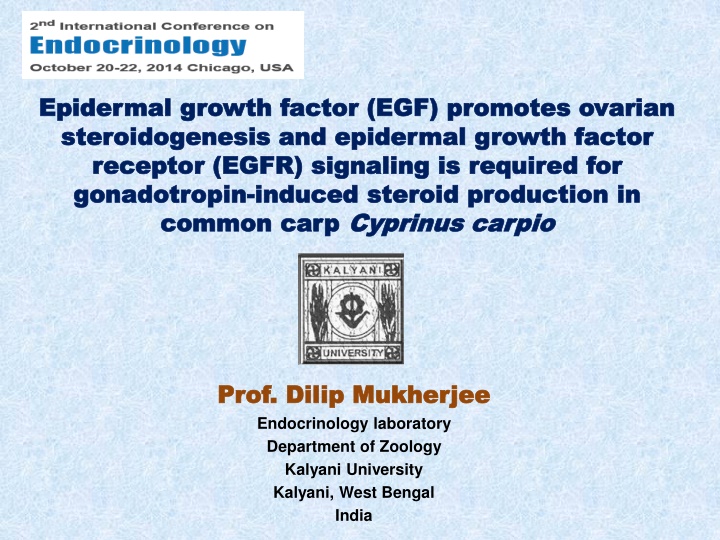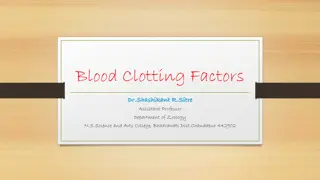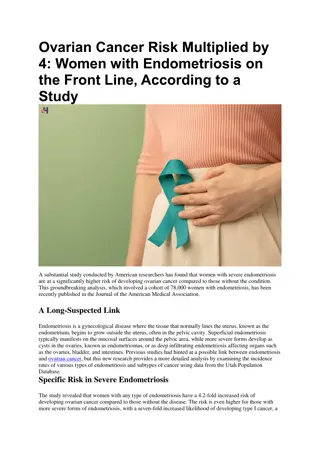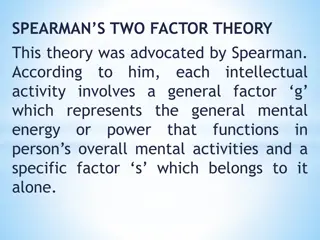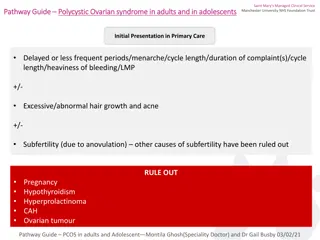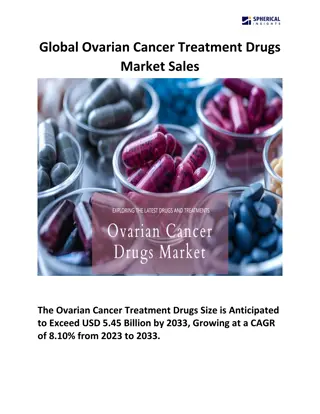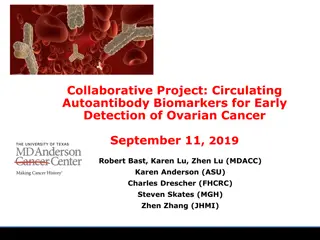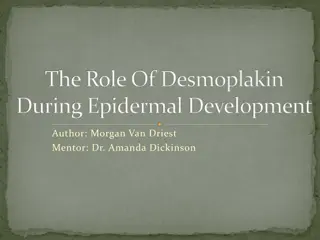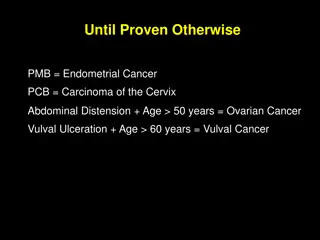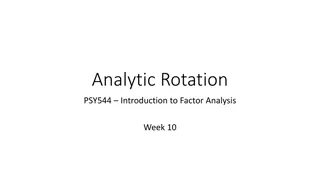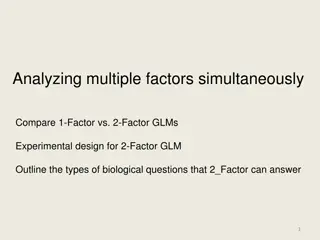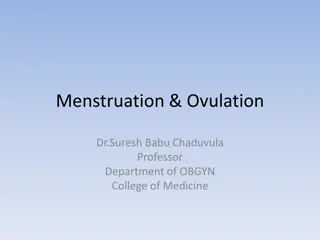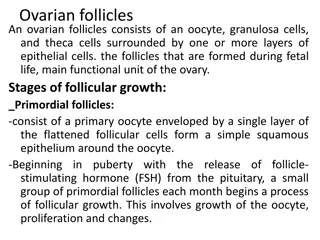Epidermal Growth Factor in Ovarian Steroidogenesis
The function of Epidermal Growth Factor (EGF) in promoting ovarian steroidogenesis and signaling pathways induced by gonadotropins, essential for understanding its role in the process. Studies have shown EGF's impact on steroid production in common carp and its influence on granulosa cell differentiation. While extensively studied in mammalian ovaries, EGF's role in non-mammalian vertebrates like zebrafish is relatively limited.
Download Presentation

Please find below an Image/Link to download the presentation.
The content on the website is provided AS IS for your information and personal use only. It may not be sold, licensed, or shared on other websites without obtaining consent from the author.If you encounter any issues during the download, it is possible that the publisher has removed the file from their server.
You are allowed to download the files provided on this website for personal or commercial use, subject to the condition that they are used lawfully. All files are the property of their respective owners.
The content on the website is provided AS IS for your information and personal use only. It may not be sold, licensed, or shared on other websites without obtaining consent from the author.
E N D
Presentation Transcript
Epidermal growth factor (EGF) promotes ovarian Epidermal growth factor (EGF) promotes ovarian steroidogenesis steroidogenesis and epidermal growth factor and epidermal growth factor receptor (EGFR) receptor (EGFR) signaling signaling is required for gonadotropin gonadotropin- -induced steroid production in induced steroid production in common carp common carp Cyprinus Cyprinus carpio is required for carpio Prof. Dilip Mukherjee Prof. Dilip Mukherjee Endocrinology laboratory Department of Zoology Kalyani University Kalyani, West Bengal India
BACKGROUD The vertebrate ovary is an extremely dynamic organ, development and function of which are primarily regulated by pituitary gonadotropins-FSH and LH However, various locally produced growth factors, particularly, IGFs, insulin and EGF are reported to play important role either independently or synergistically modulating gonadal steroidogenesis with gonadotropins in Understanding the independent role of EGF in modulating gonadal steroidogenesis and the signaling pathways induced by gonadotropins is essential to know how EGF takes part in these processes Studies on role of EGF in mammalian ovary is extensive
Mature EGF (55 amino acids) is released from large precursor anchored to the plasma membrane and EGF act by binding to a specific EGFR on the cell surface with high affinity EGFR is a glycosylated transmembrane protein (170 kDa), which represents the prototypes of RTKs and binding of EGFR by EGF activates its intrinsic receptor tyrosine kinase and rapidly elicits the downstream signaling EGF production has been demonstrated in the ovarian follicles of mammal and birds It modulates ovarian steroidogenesis and granulosa cell differentiation by increasing progesterone production and inhibit FSH-induced 17 - estradiol production EGF triggers steroidogenesis in gonadal cells, including Leydig cells and granulosa cells Whereas, EGF promotes steroidogenesis in these models, an essential role of EGF and EGFR in regulating the gonadotropin-induced steroidogenesis in mammals have recently been described
In non-mammalian vertebrates studies on EGF and its roles in the ovary are rather limited This was because EGF has not been cloned until 2004 in any non- mammalian species. It was Wang and Ge (2004) first cloned EGF and EGFR from zebrafish ovary Reports are available that in fish ovary, EGF plays role in controlling follicle survival and steroidogenesis as well as DNA synthesis in the vitellogenic follicles
Taking fish as a model we, tried to explore the regulatory role of EGF on ovarian follicular steroidogenesis and how EGFR signaling is required for gonadotropin-induced steroid production For our study, we considered isolated theca-granulosa cells of late vitellogenic ovarian follicles Theca granulosa cells were isolated by enzymatic (collagenase) digestion After isolation, theca and granulosa cells were mixed and pre-incubated for 6 h in 24 well culture plate in DMEM supplemented with 2% BCS- DMEM, streptomycin (100 g/ml) and penicillin (100 IU/ml) Initial density of theca-granulosa cell in the incubation was 0.9 x 105 and 2.1 x 105 cell per well respectively After 6 h, BCS-DMEM was replaced by serum-free DMEM in each well containing effectors and inhibitors and incubated for different time in a metabolic shaker bath at 23 10C
Granulosa cells stained with P-nitroblue- tetrazolium Theca- granulosa cells PI DAPI
Post- Vitellogenic Late- Vitellogenic Gravid follicle of human
Effect of EGF and HCG on Testosterone (T) and 17-estradiol (E2) production in carp ovarian follicles
Dose response effect of EGF on basal (hollow bar) and HCG- stimulated (solid bar) in vitro release of steroids T E2
Effect of 3-HSD inhibitor (Trilostane) on EGF- induced steroid production
Effect of protein synthesis inhibitor on EGF-induced steroid production
Inference EGFR mRNA was expressed in vitelligenic and post- vitellogenic carp ovarian follicle cells EGF independently can stimulate T and E2 production by the follicle cells and the extent of production was little less than that of HCG EGF could stimulate both basal and HCG stimulated T and E2 release. 3b-HSD inhibitor could effectively attenuate steroidogenesis Both transcription and translation inhibitor could block the steroidogenesis
Effects of EGFRI inhibitor-AG1478 on EGF-induced steroid production
Effect of MMP inhibitor, Galardin on HCG-stimulated steroid production and rescue by EGF
Inference EGFR signaling is necessary for EGF-stimulated steroidogenesis EGFR signaling is also necessary for HCG-induced follicular steroidogenesis HCG-mediated steroidogenesis in ovarian follicles requires cleavage of membrane-bound EGF family members and activation of the EGFR We proposed that, HCG activates its receptor located on the follicle cells resulting in to activation of MMPs and cleavage of the membrane-bound EGFs Soluble EGF molecule then bind to EGFR of the follicle cells to enhance steroid production
Effect of Wortmannin (Wn) and Ly294002 (Ly) on EGF-induced steroid production
EGF-stimulated P85 associated PI3 kinase activation and effect of PI3 kinase inhibitor
Effect of MEK inhibitor PD98049 on EGF-stimulated steroid production
Inference EGF stimulates the EGFR expression in carp ovarian follicular cells EGF expression can induce StAR gene EGF effects on steroid production is mediated through activation of PI3 kinase and MAP kinase
P450 mRNA and its expression in follicular cells and effects of EGF
Summary Like mammal, EGF is a potent regulator of fish ovarian steroidogenesis EGF induces steroidogenesis both independently and synergistically with gonadotropins EGF-mediated steroid production requires an active EGFR and EGFR-mediated signaling is critical for normal gonadotropin-induced steroidogenesis in fish ovarian follicles EGF signaling is mediated through PI3 kinase and MAP kinase activation EGF-mediated steroid production in fish ovarian follicle is dependent on StAR gene expression
Co-workers Suravi Sumana Buddhadev Puja Sujata Koushik Shreyasi Arindam Payel Piyali
THANK YOU THANK YOU Sisters and Brothers of America, It fills my heart with joy unspeakable to rise in response to the warm and cordial welcome which you have given us. I thank you in the name of the most ancient order of monks in the world; I thank you in the name of the mother of religions; and I thank you in the name of millions and millions of Hindu people of all classes and sects. My thanks, also, to some of the speakers on this platform who, referring to the delegates from the Orient, have told you that these men from far-off nations may well claim the honour of bearing to different lands the idea of toleration. I am proud to belong to a religion which has taught the world both tolerance and universal acceptance.................
